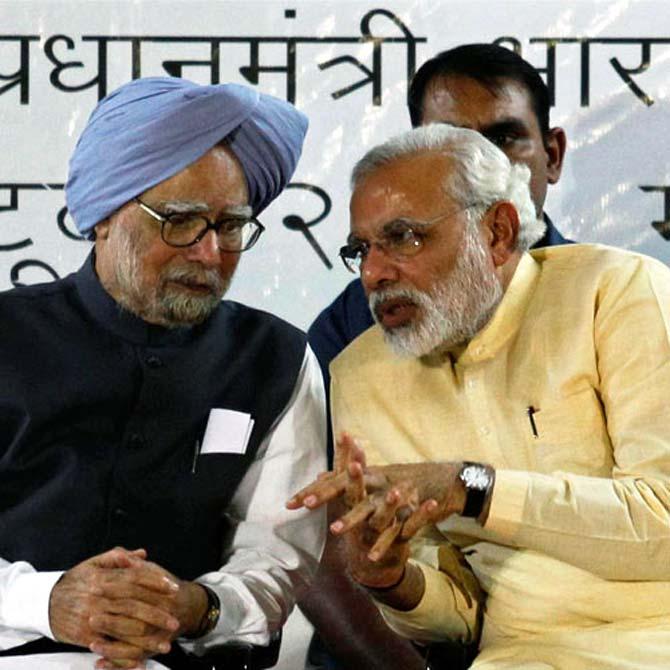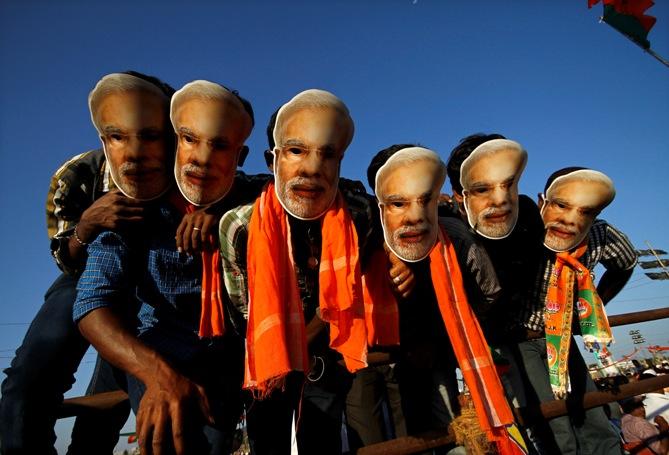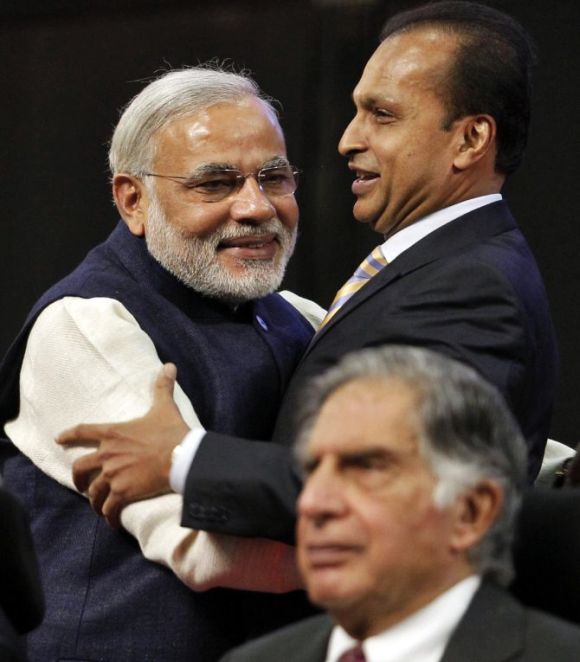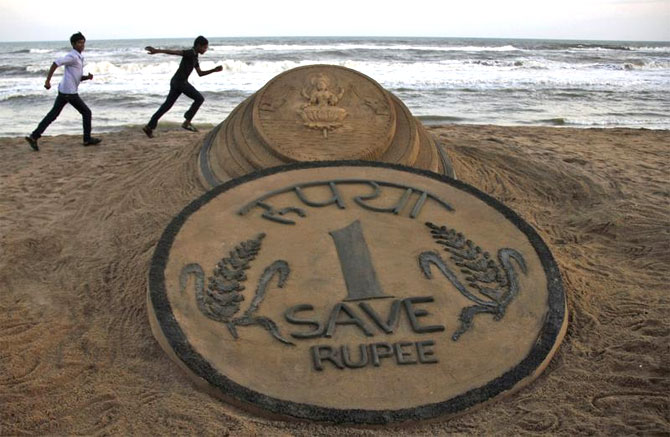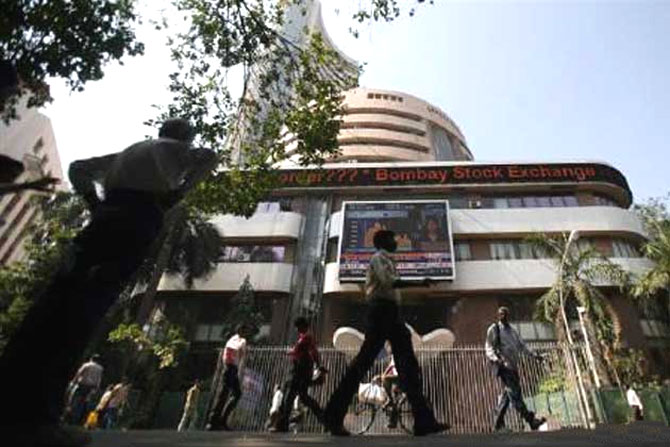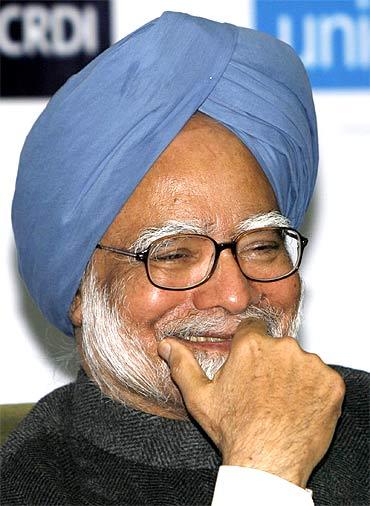 | « Back to article | Print this article |
Can Modi beat Singh's economic benchmarks?
The Sardar of reforms might look like a defeated man today but he’s still very much the man to beat for Modi.
The Straits Times did not take the Modi story on Saturday’s front page. It might be kicking itself now as the enormity of the development begins to sink in.
Some 25 foreign newspapers took it on Page 1 (source: PTI), making ST’s full-page coverage inside seem like an underplay. But, that did not stop Modi from being the talk of the smartphone capital, no longer ST-dependent.
Foreign journalists, fund managers, the diaspora and politicians have all been churning out wish lists on social media and at cocktail parties.
Singapore’s prime minister, Lee Hsien Loong (LHL), was quick to jump on the twiplomacy bandwagon, ‘congratutweeting’ Modi. An FT article even saw in him India’s answer to Lee Kwan Yew, father of LHL and the authoritarian leader who scripted the tiny republic’s leap from the third world to the first within a generation.
Click NEXT to read more…
Can Modi beat Singh's economic benchmarks?
India’s youthful millions who voted for Modi have similar dreams and expect him to lead them there. When I tried to quantify these euphoric expectations, one number that popped up was the Sensex at 100,000.
Though the index kissed 25,000 on Friday, analysts are still not seeing farther than 30,000 by the year-end and so on.
They seem bound by ‘cautious optimism’, a legacy of the crisis years.
Click NEXT to read more…
Can Modi beat Singh's economic benchmarks?
Does the 56-inch chest have the lungs to take us past the six-figure mark?
The encouraging news is that I am not the first one to dangle the 100,000 carrot.
In August 2007, Ved Prakash Chaturvedi, now L&T Capital Markets’ chief executive, created a flutter by saying the Sensex would hit 100,000.
Chaturvedi was then heading Tata Mutual Fund and insisted he was on record; the only rider was that it would do so in “our lifetime”.
Click NEXT to read more…
Can Modi beat Singh's economic benchmarks?
But, this Modi generation does not have a lifetime to wait. The BSE posterboy needs a 300 per cent leap to get there.
Share salesmen will tell you how this will require sustained two-digit economic growth, driving even faster corporate earnings growth, leading to price-earnings expansion, etc.
All I am telling you is that it has been done before.
Click NEXT to read more…
Can Modi beat Singh's economic benchmarks?
Go back to May 17, 2004. On what came to be known as Black Monday, the Sensex tanked 565 points, its second biggest fall then, to close at 4,505.
It had hit an intra-day low of 4,227 after news that the Vajpayee-led NDA government was voted out of power.
Yet, by the next 40 months, it was close to 15,000, encouraging Chaturvedi to make what looked like an outrageous forecast, despite the rider.
The bulls piled another 6,000 points before running out of steam in January 2008.
Click NEXT to read more…
Can Modi beat Singh's economic benchmarks?
In other words, over less than four years, the Sensex rose fivefold under UPA-I.
Matching that means the Sensex should be well into six figures.
A more stable than expected government under Manmohan Singh, which put the economy on a high growth trajectory, attracted foreign inflows amid a global economy recovering from the impact of 9/11. The wars in Iraq and Afghanistan helped.
Click NEXT to read more…
Can Modi beat Singh's economic benchmarks?
Conditions now are similar, if not better. The world economy is putting behind the global financial crisis that crippled it.
Funds are optimistic. In any case, in whipping up the tsunami, the new PM hasn’t given himself enough room for too many excuses.
The Sardar of reforms might look like a defeated man today but he’s still very much the man to beat for Modi.
